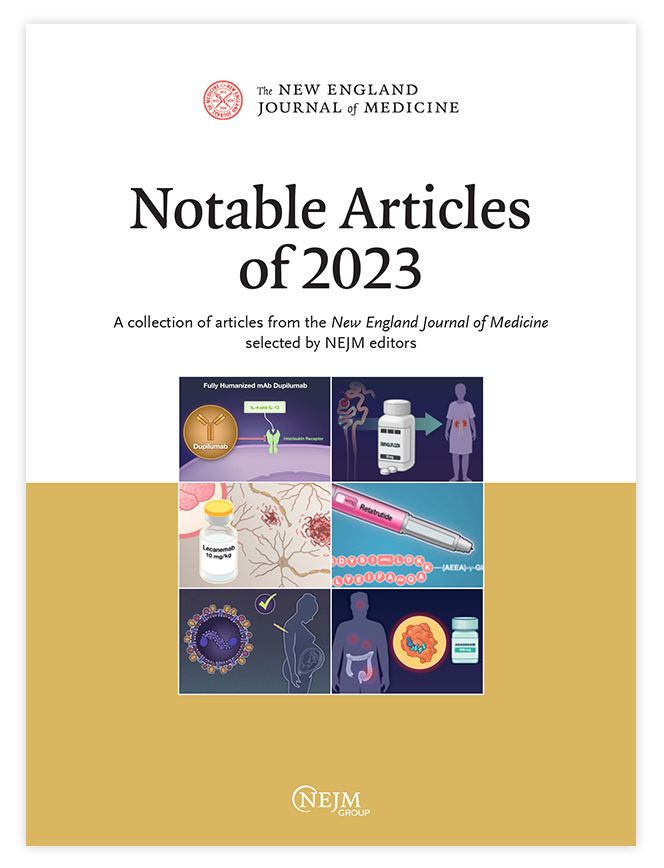肝样EPO作为红细胞增多症病因的鉴定。
IF 96.2
1区 医学
Q1 MEDICINE, GENERAL & INTERNAL
引用次数: 0
摘要
背景:继发性红细胞增多症通常是由组织缺氧或促红细胞生成素(EPO)产生不适当增加引起的。促红细胞生成素(EPO)是红细胞生成的主要调节因子,在发育过程中表达复杂且受到严格调控,在出生后不久就从肝脏转变为肾脏。方法我们鉴定了6个与正常范围内循环EPO水平相关的红细胞增生家族,并将其定性为一种新的分子和功能实体。我们使用EPO启动子驱动的荧光素酶报告基因研究了鉴定的致病变异的影响。诱导多能干细胞(iPSCs)由患者细胞生成并分化为肝细胞样epo生成细胞。采用等电聚焦法分析了遗传性红细胞增多症患者和健康新生儿的循环EPO样本,并对EPO活性进行了评估。结果在EPO非编码区发现3个新的变异。用报告细胞测定和ipsc衍生的肝细胞样细胞进行的实验表明,这些变异针对的是该基因先前未被表征的调控元件,当这些变异存在时,这些基因对缺氧表现出高度的反应性。来自所有患者的EPO样本显示出改良的等电聚焦谱,与早产儿和与肝脏疾病相关的获得性红细胞增多症患者中表达的肝EPO相同。从患者血浆和脐带血样本中纯化的EPO在体外显示出增强的EPO受体信号活性,这表明EPO的肝型糖基化具有潜在的功能增益。我们发现继发性红细胞增多可能与促红细胞生成素的变异有关,促红细胞生成素具有非典型糖基化模式和活性增加。(由卢瓦尔共和国和其他国家资助;ClinicalTrials.gov号码:NCT03957863)。本文章由计算机程序翻译,如有差异,请以英文原文为准。
Identification of Hepatic-like EPO as a Cause of Polycythemia.
BACKGROUND
Secondary erythrocytosis often results from conditions that cause tissue hypoxia or an improper increase in erythropoietin (EPO) production. EPO, the major regulator of erythropoiesis, has a complex and tightly regulated expression during development, with a liver-to-kidney switch shortly after birth.
METHODS
We identified six families with erythrocytosis that was associated with circulating EPO levels within the normal range and characterized as a novel molecular and functional entity. We investigated the effect of the identified pathogenic variants using EPO promoter-driven luciferase reporter genes. Induced pluripotent stem cells (iPSCs) were generated from patient cells and differentiated into hepatocyte-like EPO-producing cells. Samples of circulating EPO from patients with hereditary erythrocytosis and from healthy newborns were analyzed by means of isoelectric focusing, and EPO activity was assessed.
RESULTS
Three novel variants were identified in the noncoding regions of EPO. Experiments with reporter assays and iPSC-derived hepatocyte-like cells showed that the variants targeted previously uncharacterized regulatory elements of the gene, which, when the variants were present, showed high responsiveness to hypoxia. EPO samples from all the patients showed a modified isoelectric-focusing profile, identical to hepatic EPO that is expressed in premature neonates and in patients with acquired erythrocytosis associated with liver diseases. EPO that was purified from patient plasma and umbilical-cord blood samples showed enhanced EPO receptor signaling activity in vitro, which suggests a potential gain of function linked to the liver-type glycosylation of EPO.
CONCLUSIONS
We found that secondary erythrocytosis can be related to variants in EPO that lead to the production of hepatic-like EPO with an atypical glycosylation pattern and increased activity. (Funded by Région des Pays de la Loire and others; ClinicalTrials.gov number, NCT03957863.).
求助全文
通过发布文献求助,成功后即可免费获取论文全文。
去求助
来源期刊

New England Journal of Medicine
医学-医学:内科
CiteScore
145.40
自引率
0.60%
发文量
1839
审稿时长
1 months
期刊介绍:
The New England Journal of Medicine (NEJM) stands as the foremost medical journal and website worldwide. With an impressive history spanning over two centuries, NEJM boasts a consistent publication of superb, peer-reviewed research and engaging clinical content. Our primary objective revolves around delivering high-caliber information and findings at the juncture of biomedical science and clinical practice. We strive to present this knowledge in formats that are not only comprehensible but also hold practical value, effectively influencing healthcare practices and ultimately enhancing patient outcomes.
 求助内容:
求助内容: 应助结果提醒方式:
应助结果提醒方式:


